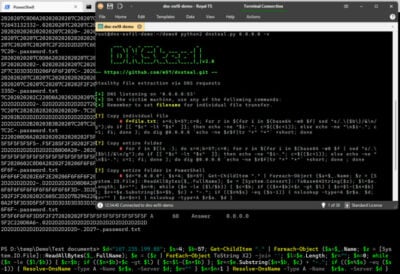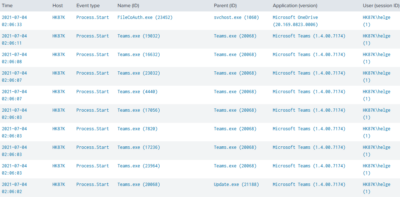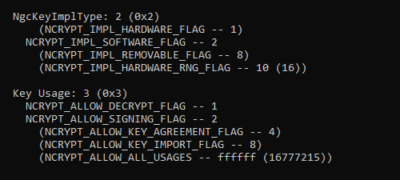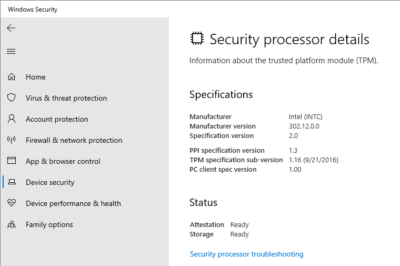Workaround: “554 rejected due to spam content” sending e-mail
It sometimes happens when I reply to an e-mail from somebody who is asking about my products that the receiving mail server rejects my message with the code “554 rejected due to spam content”.
Google Apps notifies about that like this:
Delivery to the following recipient failed permanently:
RECIPIENT EMAIL ADDRESS
Technical details of permanent failure:
Google tried to deliver your message, but it was rejected by the server for the recipient domain RECIPIENT DOMAIN by RECIPIENT MAIL SERVER. [RECIPIENT MAIL SERVER IP ADDRESS].
The error that the other server returned was:
554 rejected due to spam content

Vintage Ad #906 by jbcurio under CC
When that happens I try to send the message from another e-mail account. That works in some cases, but not always. Sometimes the second attempt fails, too, although the second message was sent from a different domain with a different mail server, whose notification looks like this:
This is the mail system at host cc-smtpout3.netcologne.de.
I'm sorry to have to inform you that your message could not
be delivered to one or more recipients. It's attached below.
For further assistance, please send mail to postmaster.
If you do so, please include this problem report. You can
delete your own text from the attached returned message.
The mail system
<RECIPIENT EMAIL ADDRESS>: host RECIPIENT MAIL SERVER[RECIPIENT MAIL SERVER IP ADDRESS] said: 554
rejected due to spam content (in reply to end of DATA command)
Final-Recipient: rfc822; RECIPIENT EMAIL ADDRESS
Original-Recipient: rfc822;RECIPIENT EMAIL ADDRESS
Action: failed
Status: 5.0.0
Remote-MTA: dns; RECIPIENT MAIL SERVER
Diagnostic-Code: smtp; 554 rejected due to spam content
Obviously, this has nothing to do with my mail system. These are false positives where the receiving mail server finds something in my e-mails it does not like – but what? I had not attached anything and the messages were just a few lines of text.
As it turned out some security products do not like URLs in e-mails. In all cases my messages went through once I removed any links I had added. In cases where my messages did not contain any links I removed the URL to my website in the signature.









28 Comments
this saved me 60 min of frustration. thank you
Good info… Thanks
I get the same email error message, however my messages do get sent, but i also get this reject spam content email…
Weird
The same happens for me! It’s SO frustrating! Especially when people obviously give me their email to contact them =/
Very helpfull, indeed. Thank you.
Very helpful. Thanks!!!
It helped me to solve an issue due to YAC (Yet Another Cleaner) that I had installed onto my machine and put a footer into the email.
Michele
Thanx. Greetings from Copenhagen
Had the same problem, found the same work-around. But surely it can’t be a solution to just not send hyper-links. What if you want to send someone a link? There’s got to be a way, other than change email provider?
Good to make your mail plain-text to solve this..
Thank you you so much for your clear instructions. I have had this problem with one particular client where ALL my emails were bouncing back for months & I couldn’t figure out why. My co-works were corresponding with the same client with no problem. I followed your suggestion & all is now working.
Thanks again
Thanks.. Have spent all afternoon trying to sort this out. Seems a simple link to our website in my signature was at fault. Quite ridiculous that email is being blocked because of that.
27.4.16. Yes this blocking is terrible and I would say dangerous. We are involved in exposing Political.Medical.Legal anomalies in UK and because our evidence gathering created 1000 pp which BBC advised to hide abroad we are in a particularly fraught situation not knowing if this error code is being imposed by oppressive action. In our game ones senses are super alert and this of thing easily causes a reaction which may or may not be relevant. This week we suddenly notice Emails being rejected. The point is how come it was not happening over past ten yrs when our text controls were much slacker. Even if our views are not accurate it does not alter what we have discovered and the implications are doomsday…Believe me
Helped me as well. Crazy! Simple but can mess up your week!
worked fine for me – cheers! I left out all Links and finally it got through!!
Twice I was replying to a friend/colleague and got the mail delivery error: [“Return Code 554] sid: VaJ21t00A1s9Ecx01 :: 5.7.1 The message from () with the subject of (RE: finally) matches a profile the Internet community may consider spam. Please revise your message before resending.”
There was nothing even exciting in the email. I sent it to the friend’s personal email instead of his business address, and it went through fine both times.
Any thoughts?
Thank you.
Worked for us here too, Thanks to you, we were able to return an email asking for a business quote.
Thanks!
You saved my interview!
You are a genius! Thank you.
Thanks from Wellington!
Esto también me ha pasado al migrar un dominio de una IP a otra.
No aparece en ninguna lista negra? cuando me colocan en su lista blanca, los correos ya no tienen problemas. Me dicen que debo esperar entre 24 a 48 horas para el replicado. Migré a AWS, y ojo! el rDNS se hace en el ISP o LACNIC si tienen IP propia.
I have found the problem and another work-around.
The spam filter gags on the “http” or “https” – either leave it out and tell the recipient to add it, OR replace it with “h-ttps” / “h-ttp”, OR put your whole message into a DOC file and add it as an attachment.
Terry
What is the work around for this 554 5.7.1 [P4] Message blocked due to spam content in the message. I keep getting this on some emails
BUT how do you override this when you need to send a link in the email?
Just in case it helps anyone else I seem to have a similar issue with emails to people using the provider xtra.co.nz – I receive the message “The reason for the problem:5.3.0 – Other mail system problem 554-‘5.7.1 Message rejected due to possible spam content’ ”
Reading the previous emails in this thread there are no URLS but the problem seems to be solved by removing the email addresses which I had in the body of the message.
Since May 2019 all mail from US to @web.de and gmx.de is returned for various reasons. However, using wife’s computer and her account, no rejection is made. Who does this censoring and how can one get this fixed??
Greetings of the day.
Wow, you are absolutely fantastic with your solution. Been quite disturbed for the last three days, regarding the mail being sent to someone.
Finally, got it thru.
The solution worked like a charm.
Regards.
I have this problem only with my desktop POP email for the last two weeks. No URL links, still unable to send ANY emails via CenturyLink POP email. Finally was informed I can send an email to the CL postmaster which I’ve done.
Server Response: ‘554 5.7.1 [VO-1] Message blocked due to spam content in the message.’, Port: 587, Secure(SSL): No, Server Error: 554, Error Number: 0x800CCC6F
I have problems even when removing the http or https. What I have finally resorted to doing is sending my e-mails out as pdf file attachements. This gets around the problem entirely so far.